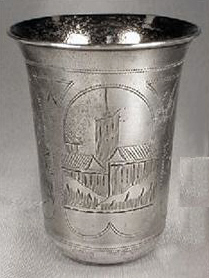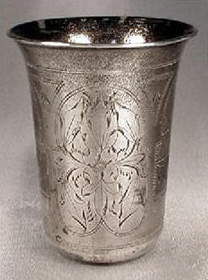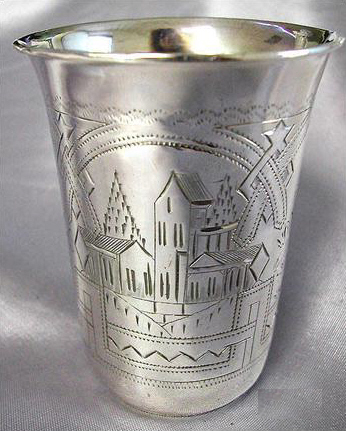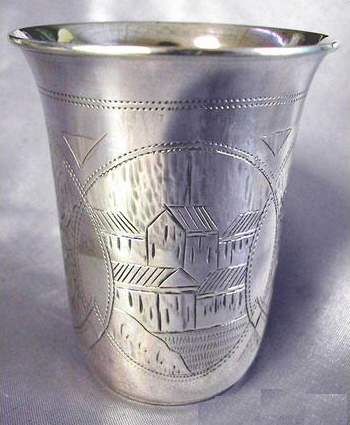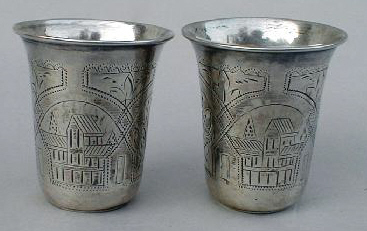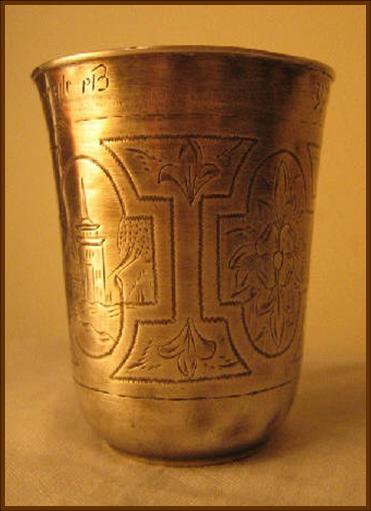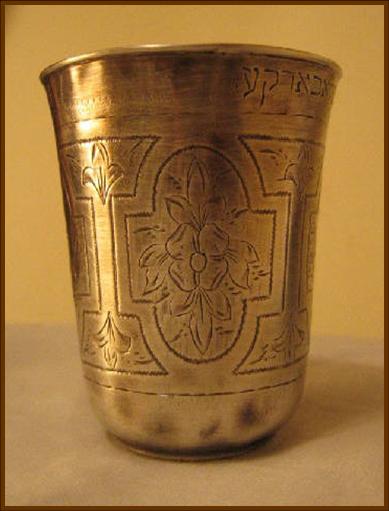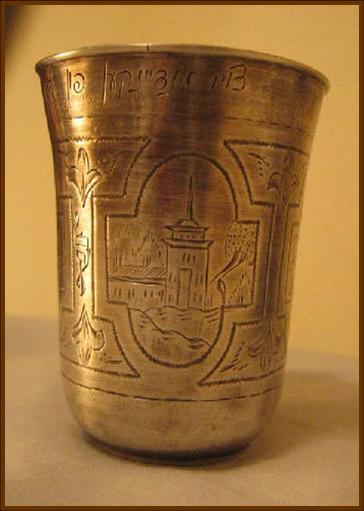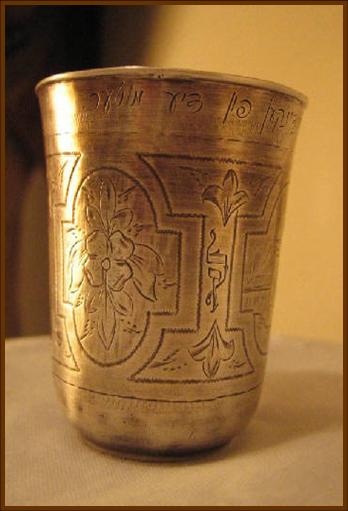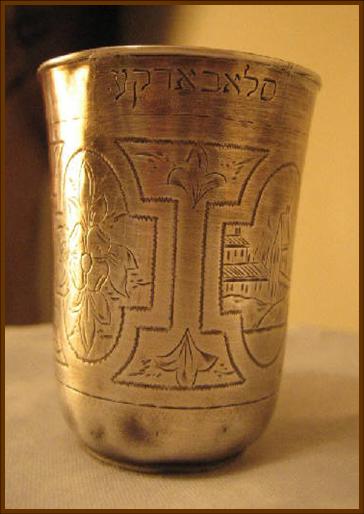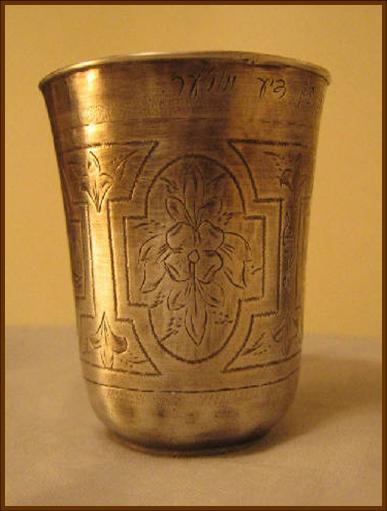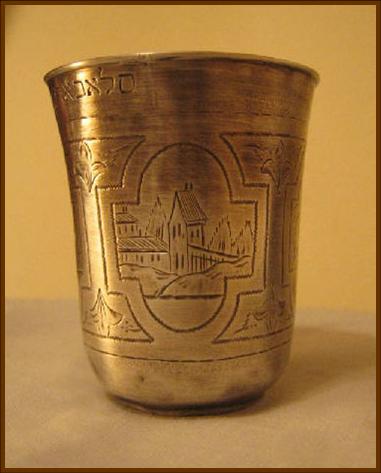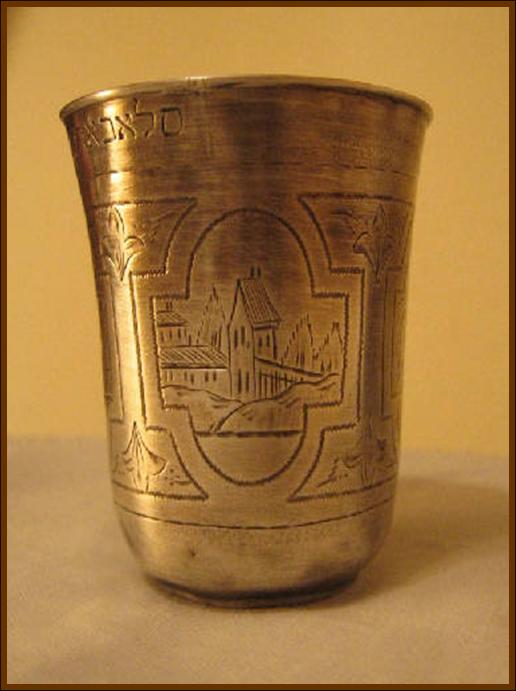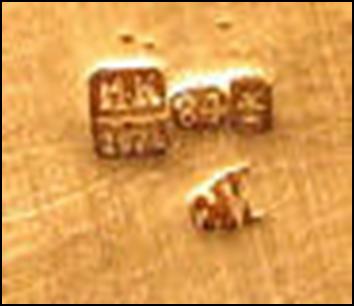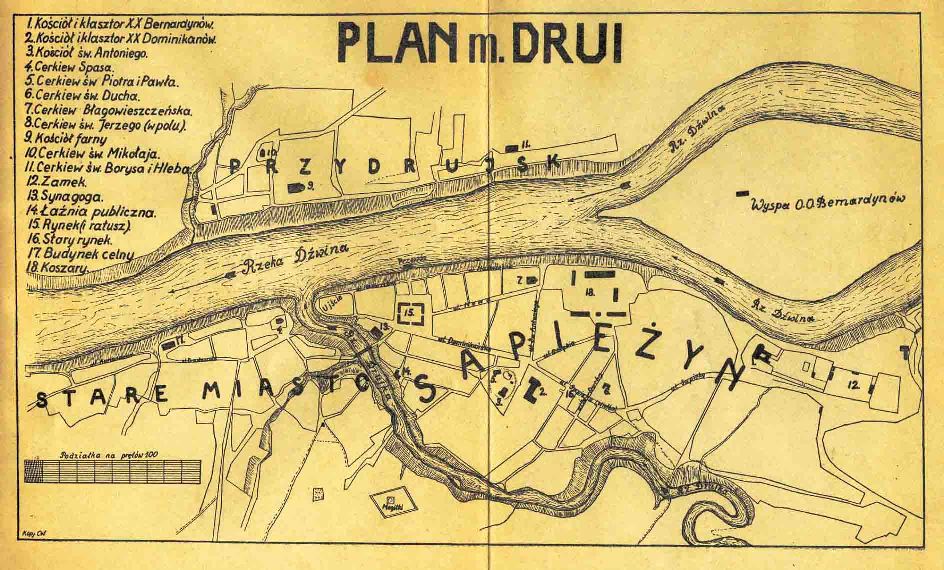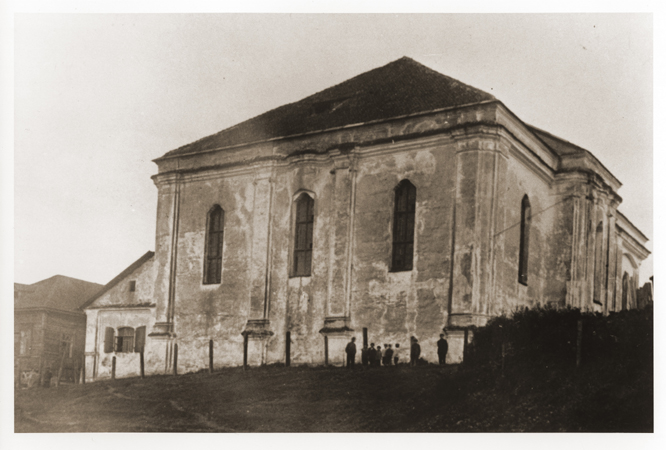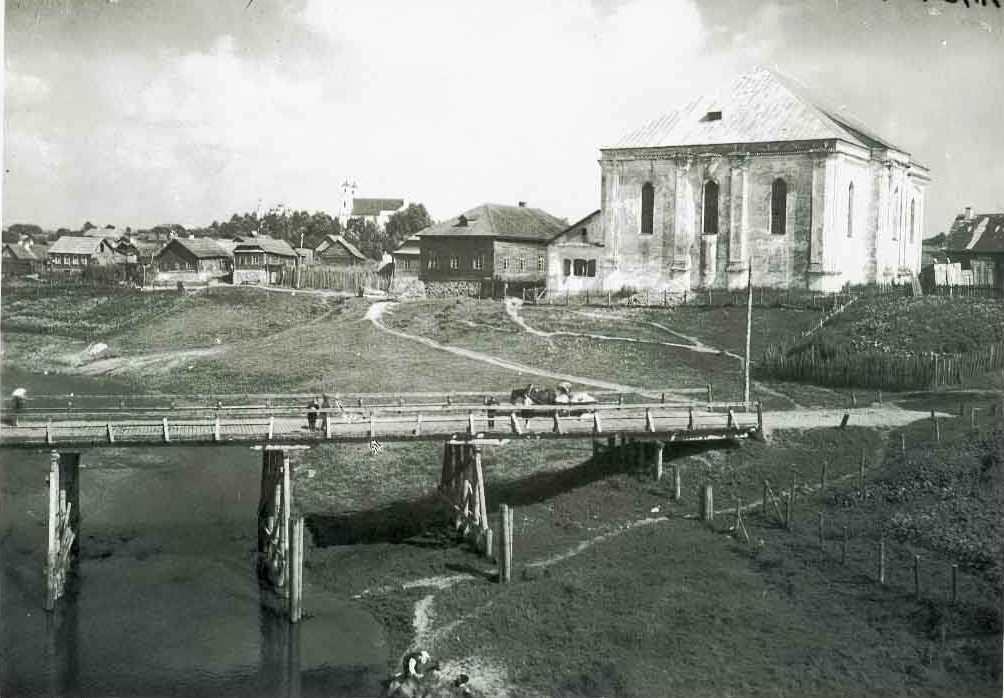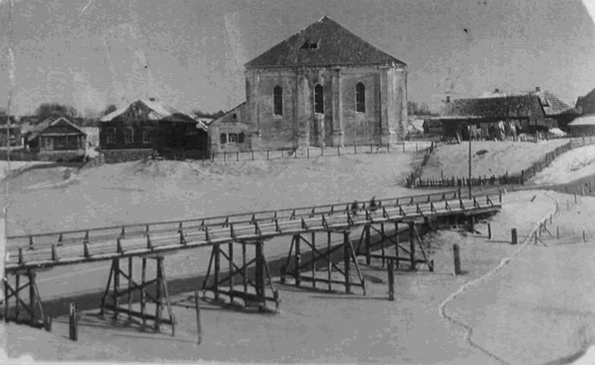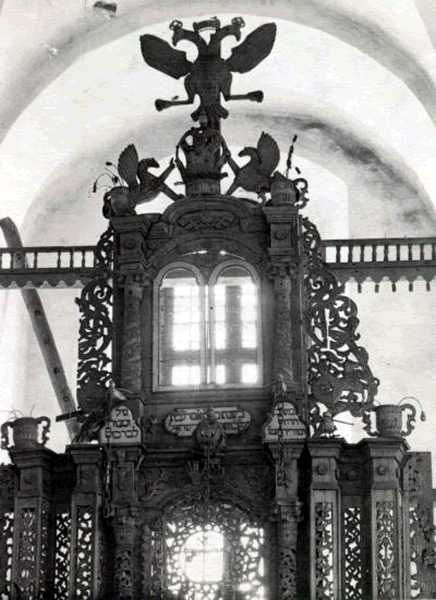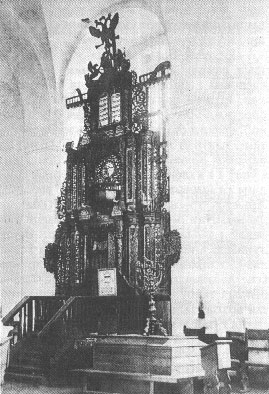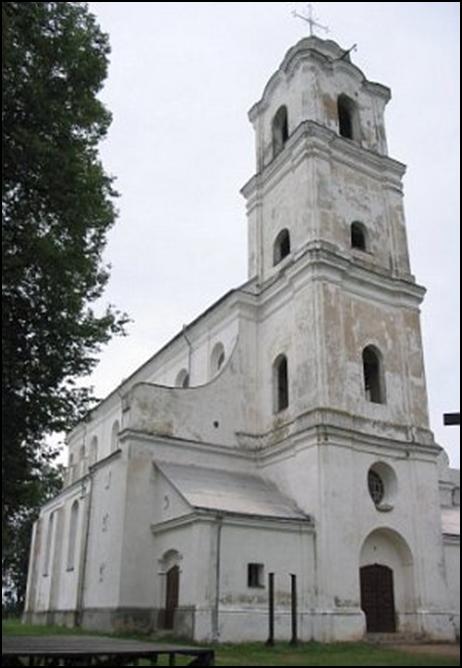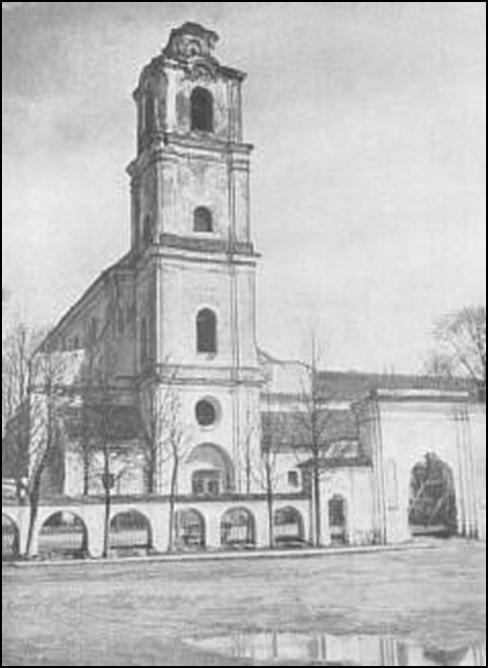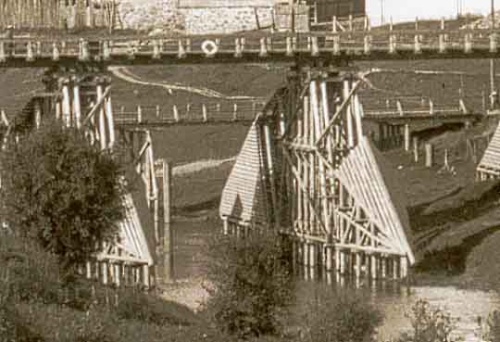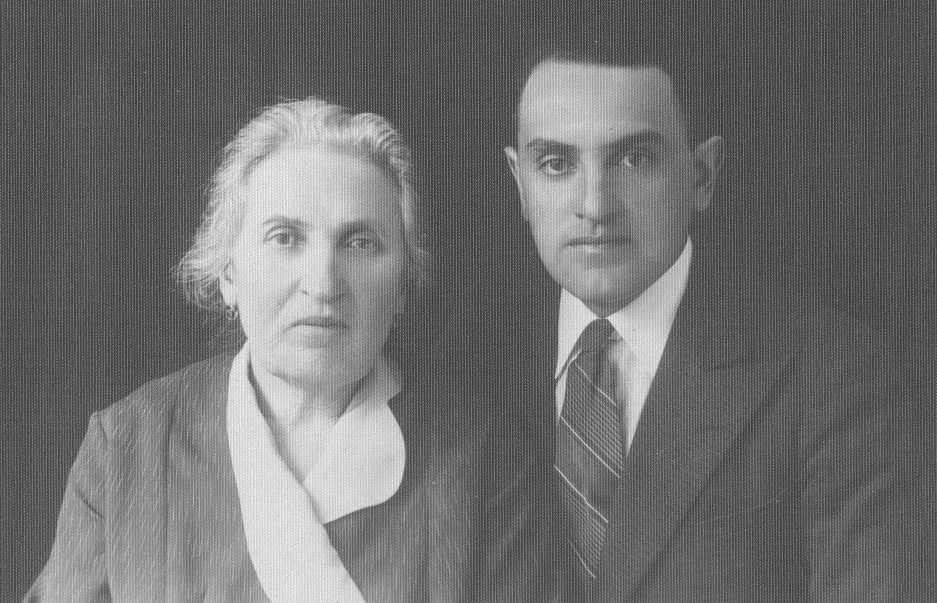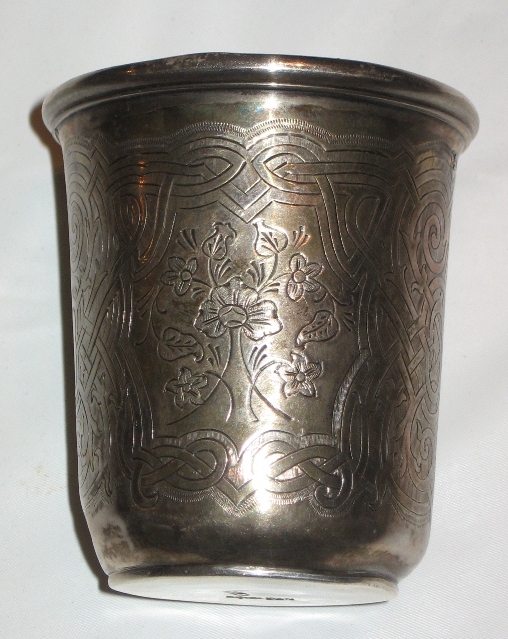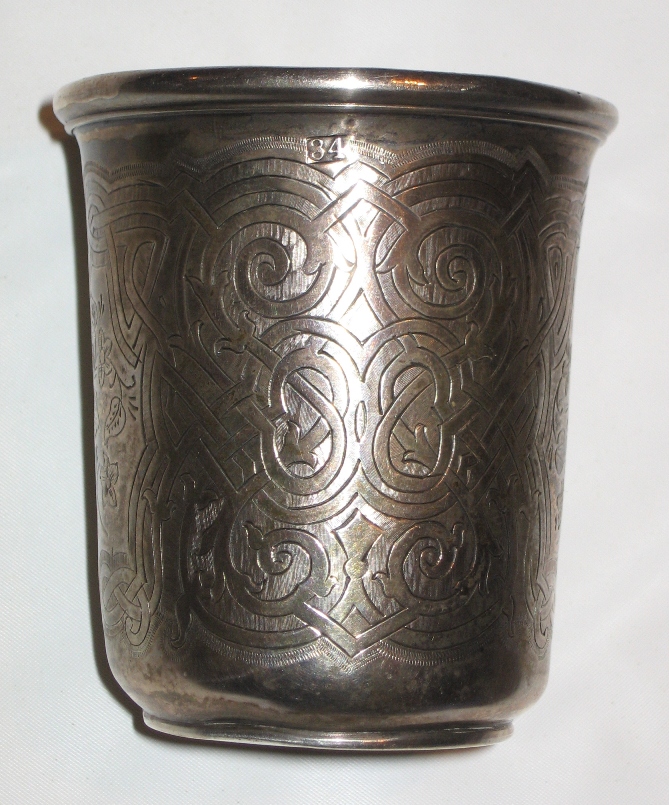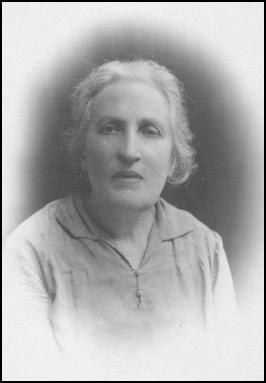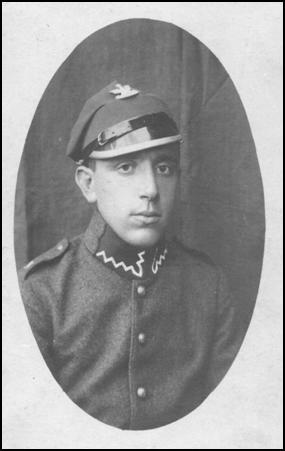Few items symbolised the Jewish home quite like the Shabbat candle sticks and the Kiddush Cup. Not only were they essential for the Friday night blessing for Shabbat, but they became one of the only artifacts common in every Jewish home, upon which Jewish artisans had an opportunity to express themselves artistically. They were also one of the few items that accompanied Jewish emigrants in their migration from the Pale of Settlement.
Though Halacha (Jewish ritual law) does not mandate a specific type of cup for the kiddush wine, it became customary to go beyond the requirements prescribed in the Mishnah and Talmud (Pesahim 108b, Berakhot 51a) - that the cup be clean, unbroken and of minimum size of a quarter of a log, around 86 ml. - and to reserve special goblets or beakers for Shabbat and Yom Tov. In most European communities silver cups became the norm, often engraved with vines, floral designs, architectural impresions and Jewish symbols, together with inscriptions with quotations from Kiddush, family names or dedications.
In the 18th and 19th centuries the silversmiths of the Jewish communities of Eastern Europe created a style of beaker decorated with floral designs together with buildings typical of the Shtetl.
Though Halacha (Jewish ritual law) does not mandate a specific type of cup for the kiddush wine, it became customary to go beyond the requirements prescribed in the Mishnah and Talmud (Pesahim 108b, Berakhot 51a) - that the cup be clean, unbroken and of minimum size of a quarter of a log, around 86 ml. - and to reserve special goblets or beakers for Shabbat and Yom Tov. In most European communities silver cups became the norm, often engraved with vines, floral designs, architectural impresions and Jewish symbols, together with inscriptions with quotations from Kiddush, family names or dedications.
In the 18th and 19th centuries the silversmiths of the Jewish communities of Eastern Europe created a style of beaker decorated with floral designs together with buildings typical of the Shtetl.






The Kiddush Cup of the Seligman Family
The Seligman Kiddush Cup & the Druya Great Synagogue

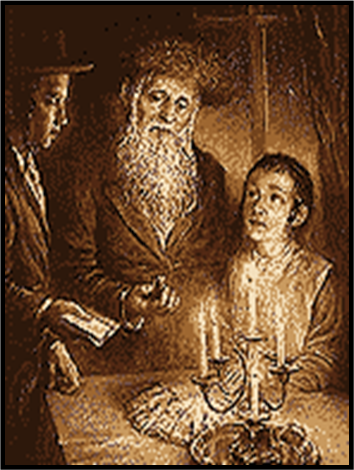
Nineteenth Century Kiddush Cups with Architectural Motifs
The Seligman Kiddush Cup
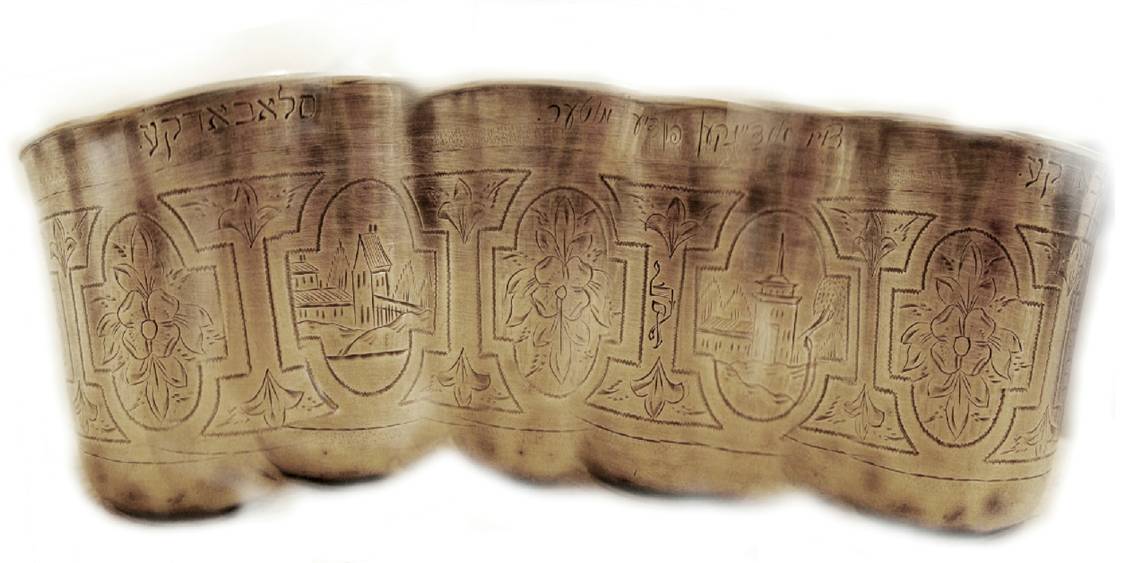
Sara Leah & Leibe
The Hallmark on the Base of the Cup
Synagogue & Bridge
Church
Symbolism or Reality
As we have seen, the designs on the cup are common decorative themes and there are many similar examples of this Kiddush Cup showing a generalised liking of typical shtetl buildings. Still certain aspects of the motif lead us to suggest that this cup shows an actual scene.
In the nearby shtetl of Druya was a well known synagogue, the most important Jewish monument of the region. The magnificent structure was built in 1766 and supported a sloping roof, very similar to the building shown on the cup. And fronting the synagogue was a wooden bridge over the Drujka river, built of rows of columns, again exactly as shown. This Kiddush Cup, in our view, shows the famous Druya synagogue destroyed by the Nazis after the destruction of the Druya community in July 1942, together with Leibe’s sister Chasia and her family. The bridge also did not survive the war. It was dismantled by Jewish youths from Slobodka and Drujsk by order of the Nazis in 1942.
So if the synagogue is a representation of reality, what about the church. In Druya were a number of churches belonging to the Catholic and Orthodox Christian communities. The church most similar to that shown on the cup is the Trinity Church of the Bernadine Monastery built in 1643. This church has a belfry with a multiple tiered roof, similar to the engraving.
As we have seen, the designs on the cup are common decorative themes and there are many similar examples of this Kiddush Cup showing a generalised liking of typical shtetl buildings. Still certain aspects of the motif lead us to suggest that this cup shows an actual scene.
In the nearby shtetl of Druya was a well known synagogue, the most important Jewish monument of the region. The magnificent structure was built in 1766 and supported a sloping roof, very similar to the building shown on the cup. And fronting the synagogue was a wooden bridge over the Drujka river, built of rows of columns, again exactly as shown. This Kiddush Cup, in our view, shows the famous Druya synagogue destroyed by the Nazis after the destruction of the Druya community in July 1942, together with Leibe’s sister Chasia and her family. The bridge also did not survive the war. It was dismantled by Jewish youths from Slobodka and Drujsk by order of the Nazis in 1942.
So if the synagogue is a representation of reality, what about the church. In Druya were a number of churches belonging to the Catholic and Orthodox Christian communities. The church most similar to that shown on the cup is the Trinity Church of the Bernadine Monastery built in 1643. This church has a belfry with a multiple tiered roof, similar to the engraving.
Map of Druya - The Synagogue is marked as number 13
The Great Synagogue of Druya
The Great Synagogue of Druya was a splendid monument, well known in the area surrounding Vilna. The edifice was built from funds donated in 1766 by the powerful szlachta (noble) Sapieha family, as a gift to the important Jewish community in Druya. According to local legend the synagogue was a token of gratitude to Rav Michali, Druya's Rabbi, for blessing Prince Sapieha with the birth of a healthy heir after four still births. On the child's first birthday the Prince had presented the Rabbi with gold coin. On his refusal to accept the money the Prince ordered the constuction of a magnificient synagogue and commissioned the sculpture of a beautiful Aron Kodesh.
The structure was built on the western side of the town at the confluence of the Drujka and the Dvina Rivers, while in the central part of Druya stood the Catholic Church of the Trinity that was built at the same time. The synagogue was built of stone, an unusual feature in an area where most buildings were constructed of wood. It was a large square building with four central pillars that enclosed the bimah. The
The Great Synagogue of Druya was a splendid monument, well known in the area surrounding Vilna. The edifice was built from funds donated in 1766 by the powerful szlachta (noble) Sapieha family, as a gift to the important Jewish community in Druya. According to local legend the synagogue was a token of gratitude to Rav Michali, Druya's Rabbi, for blessing Prince Sapieha with the birth of a healthy heir after four still births. On the child's first birthday the Prince had presented the Rabbi with gold coin. On his refusal to accept the money the Prince ordered the constuction of a magnificient synagogue and commissioned the sculpture of a beautiful Aron Kodesh.
The structure was built on the western side of the town at the confluence of the Drujka and the Dvina Rivers, while in the central part of Druya stood the Catholic Church of the Trinity that was built at the same time. The synagogue was built of stone, an unusual feature in an area where most buildings were constructed of wood. It was a large square building with four central pillars that enclosed the bimah. The
exterior was painted white and supported a sloping roof. Fronting the synagogue was a wooden bridge over the Drujka river (a tributary of the great Dvina River), built of rows of wooden columns.
The magnificent ark, famous throughout the region, was topped with a Russian-Romanov style eagle which stood on top of the heads of a pair of rampant griffins.
The magnificent ark, famous throughout the region, was topped with a Russian-Romanov style eagle which stood on top of the heads of a pair of rampant griffins.
The Druya Great Synagogue and Ark - 1766-1942
Trinity Church & Bridge

The Sapieha (Sapiega) Szlachta Family
The nobles of the Polish-Lithuanian Commonwealth, who ruled a large area of Eastern Europe between 1569 to 1795, titled as Szlachta. Traditionally, Szlachta were landed gentry controlling huge farms known as folwarks in which serfs toiled for the noble's profit. They were also appointed to leading governmental office, enjoying substantial political privileges until the collapse of the Commonwealth in the late 18th century.
The Sapieha family was a princely family descending from the medieval feudal lords (boyars) of Smolensk. They rose in influence in the sixteenth century when Lew Sapieha was appointed as Chancellor and Great Hetman of Lithuania. Though the importance of the family declined they retained princely title into the 19th century. Members of the family controlled large tracts of land in what is now Lithuania and Belarus in which peasants were worked as serfs and Jews were often given positions that placed them as middlemen between the serfs and the nobles, in a policy of divide and rule. The donation of public institutions, such as the building of churches, and more unusually a synagogue, would have been one of the ways in which the szlachta could endear themselves to the population.
The nobles of the Polish-Lithuanian Commonwealth, who ruled a large area of Eastern Europe between 1569 to 1795, titled as Szlachta. Traditionally, Szlachta were landed gentry controlling huge farms known as folwarks in which serfs toiled for the noble's profit. They were also appointed to leading governmental office, enjoying substantial political privileges until the collapse of the Commonwealth in the late 18th century.
The Sapieha family was a princely family descending from the medieval feudal lords (boyars) of Smolensk. They rose in influence in the sixteenth century when Lew Sapieha was appointed as Chancellor and Great Hetman of Lithuania. Though the importance of the family declined they retained princely title into the 19th century. Members of the family controlled large tracts of land in what is now Lithuania and Belarus in which peasants were worked as serfs and Jews were often given positions that placed them as middlemen between the serfs and the nobles, in a policy of divide and rule. The donation of public institutions, such as the building of churches, and more unusually a synagogue, would have been one of the ways in which the szlachta could endear themselves to the population.
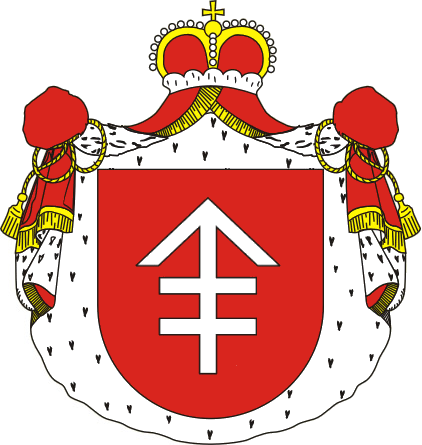
The Lis (Fox) Coat of Arms used by the Sapieha Szlachta during the Polish-Lithuanian Commonwealth
Another Kiddush Cup from Slobodka
Sara Leah Seligman also presented a Kiddush Cup to her second son, Getzel, on his immigation fom Slobodka to South Africa in 1934.
The beautifully executed design on the cup is purely decorative with floral and geometric motifs.
Sara Leah Seligman also presented a Kiddush Cup to her second son, Getzel, on his immigation fom Slobodka to South Africa in 1934.
The beautifully executed design on the cup is purely decorative with floral and geometric motifs.
Sara Leah & Getzel in 1934
Getzel's Kiddush Cup
Copyright © 2008-9 Jon Seligman. All Rights Reserved.
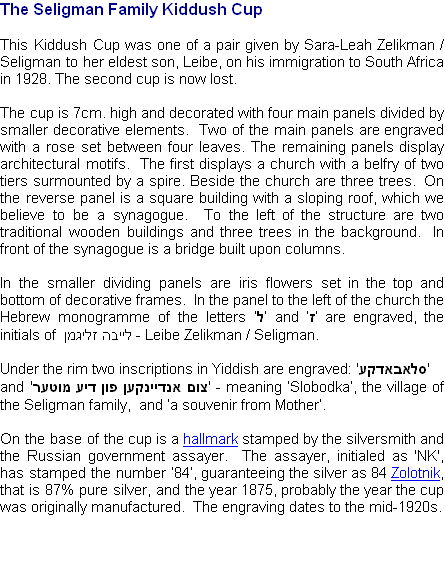
The charcoal drawing of the interior of the Druya Great Synagogue hangs behind the desk of the first President of Israel Prof. Chaim Weizmann in his presidential home in Rehovot. Beside it is a similar portrait of the Great Synagogue in Pinsk, both drafted by the Russian graphic artist and art historian Georgy Kreskentievich Lukomsky (1884-1952).
(photograph: Meir Levitanus)
(photograph: Meir Levitanus)

